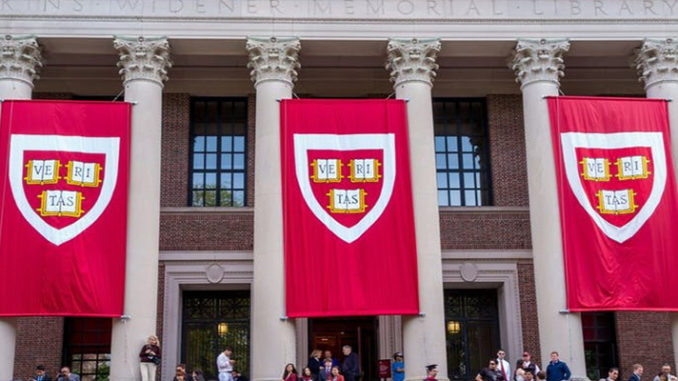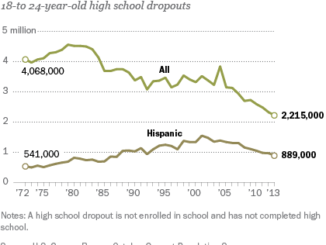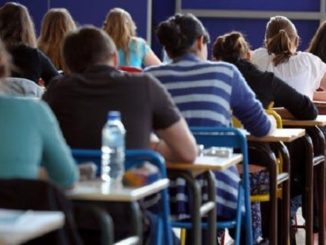
When it comes to the use of race-conscious affirmative action in college admissions, no one seems to be happy with the way it’s playing out.
Opponents charge that taking into account an applicant’s race or ethnicity amounts to “reverse discrimination.” Supporters recognize that disadvantaged minorities have been losing ground under affirmative action. Blacks and Hispanics are less likely to attend a top college than they were 35 years ago.
As a professor of constitutional law, I’ve studied an important college admission policy from Texas that – when paired with affirmative action – can more fully address inequality and its consequences.
This policy bears more relevance now that the Trump administration has reversed Obama-era support for affirmative action, following instead a Bush administration guideline that “strongly encourages race-neutral” admissions practices.
I believe the policy could also be instructive for Harvard, which is currently facing a lawsuit charging that the university’s efforts to increase racial diversity discriminate against Asian-Americans.
The Texas top 10 percent policy
The college admission policy in Texas holds that if students graduate in the top 10 percent of their high school class, they earn automatic admission to the University of Texas at Austin, Texas A&M and other state-run universities. This promotes diversity in the colleges’ entering classes because students at poor, mostly minority high schools have the same odds of admission as students at wealthy, mostly white schools.
At UT-Austin, which admits students through both a modified top 10 track and a standard track with an affirmative action component, the top 10 students are 34 percent Hispanic while the standard students are only 20 percent Hispanic. Nineteen percent of the top 10 students, but only 7 percent of the standard students, come from low-income families. When it comes to creating a diverse student body, the top 10 policy has done a better job than has affirmative action.
The top 10 policy has become a model in other states and countries. For instance, France uses a top 10 policy in its system of higher education. And New York City Mayor Bill de Blasio has proposed a similar policy for New York’s elite public high schools.
Some observers worry whether high school class rank is an adequate measure of student ability. The top students from a weak school may not be as capable as middle-of-the-pack students from a strong high school.
But Texas has been able to maintain quality with its increased diversity. The top 10 students at UT-Austin achieve at the same levels as their classmates who are most like the applicants who were denied admission because of the top 10 policy. The top 10 students also graduate at the same rate
Addressing economic disparities
Top 10 policies also address the problem of economic inequality by targeting a key cause – the “economic segregation” of neighborhoods in the United States.
Economic inequality creates highly uneven opportunities for success in life. Children in wealthier communities have much greater chances for upward mobility than do children in low-income communities.
And what matters more for children’s professional opportunities is not how rich or poor their families are but how rich or poor their neighborhoods are. Thus, a poor child living in an economically diverse community has much greater upward mobility than does a poor child living in a poor community.
Traditional college admissions policies reward upper-income families for creating exclusive neighborhoods that have stronger school systems than elsewhere. The higher-quality high schools will more likely be seen as “feeder” schools for top colleges.
But consider what would happen if elite colleges adopt something like the top 10 policy, where the best students from different high schools all have the same odds of acceptance.
If that were true, parents would weaken their children’s chances of admission by creating exclusive communities. Their children’s chances of admission would be greater if they lived in economically integrated communities. Top 10-like policies can turn elite universities from institutions that exacerbate inequality into institutions that foster equality.
Would parents really choose less exclusive communities and lower-performing schools to improve their children’s chances for admission to an elite college? They have in Texas. Studies have shown that many parents select lower-performing schools and live in less prosperous school districts to take advantage of the top 10 policy.
To be sure, the effects on school and residential choice have been modest – in the 5 to 10 percent range. But that’s because the top 10 policy doesn’t affect an applicant’s chances of admission to a private university or an out-of-state public university. If all elite universities followed the Texas model, the incentives for residential integration would be powerful.
And the benefits from residential integration need not come with a sacrifice of academic excellence, as some critics charge. As the Texas experience indicates, colleges can treat the top applicants from all high schools equally and maintain the quality of their student bodies.
To be sure, there are increased costs to smoothing the transition to the rigors of college studies for students from weaker high schools. Fortunately, elite colleges have ample financial resources to meet the need.
Preserving diversity
If affluent students move to lower-performing schools, wouldn’t they simply displace their less affluent peers from the top of the class? That will happen to some degree, but a few aspects are reassuring.
Consider, for example, how top 10 policies affect the performance of students who already attend lower-performing schools. By increasing the chances for admission to an elite university, the policies give the students greater reason to work hard in school. And the students respond by achieving at higher levels.
Other innovative reforms, such as the New Orleans charter school system, have the same impact. When policymakers level the playing field for disadvantaged children, those kids excel in school, too.
Most importantly, colleges can pair the Texas model with affirmative action to realize the benefits of top 10 policies while also ensuring that their student bodies remain diverse.
is a Professor of Law and Co-Director, Health Law Program, University of Nevada, Las Vegas



